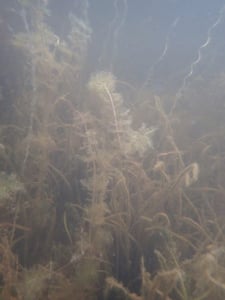Since the mid 2000s, the Great Lakes protected shorelines and inland waterways of Michigan's Upper Peninsula (Lakes Huron, Michigan, and Superior) have developed populations of the aquatic invasive species Eurasian watermilfoil (Myriophyllum spicatum or EWM) with alarming proliferation. EWM is an aquatic invasive plant that is a major threat to water bodies throughout North America and one of the greatest concerns in the Great Lakes states (Allan et al. 2013).

In a collaborative Great Lakes Restoration Initiative project, MTRI partners with Chassell and Torch Bay Townships, the US Environmental Protection Agency, Michigan Technological University and MTU's Great Lakes Research Center, we tool a multifaceted analysis and extension approach aimed at arresting EWM in its early stages in the Upper Great Lakes so similar invasions do not become the norm. Small communities along the Upper Peninsula's Great Lakes shorelines, such as those along the Keweenaw waterway in the Keweenaw Peninsula, rely on nearshore waterways, ecosystems, and fish and bird habitat to enable Michigan and Wisconsin's tourist industry. Left unmanaged, invasive EWM can severely impact native ecosystems and can affect the financial viability of local communities.
Dense surface canopies of EWM can reduce water movement and oxygen levels and block the sunlight needed by desirable native plants, thus indirectly impacting fish and other aquatic organisms especially important for recreation and tourism as well as local tribal subsistence and commerce. In addition to effects on ecosystems and fisheries, EWM has been shown to have extensive economic impacts on communities (Eiswerth et al. 2000) and has the potential to reduce real estate values and the tourist-associated economies of coastal communities on the Great Lakes.
We monitored the dynamics and effectiveness of EWM control in patches treated by local communities while also studying the ecological impacts of EWM management on water quality, native vegetation communities, productivity, and water chemistry.
Remote sensing, including aerial and satellite imagery as well as underwater acoustic imagery, are analyzed to quantitatively and efficiently assess both the regional extent of EWM (identifying newly invaded areas at an early stage without intensive field monitoring) and the local outcomes of EWM treatments, enabling managers to monitor the impacts of and improve the techniques used for combating this invader and restoring natural habitat in coastal areas of the Great Lakes.

